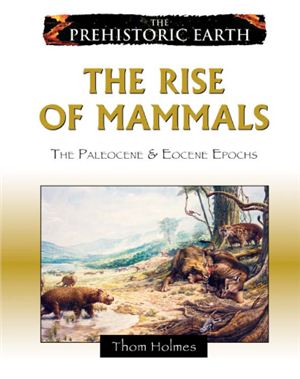Chelsea House Publications, 2008. - 163 pages. Series "The
Prehistoric Earth".
The Paleocene epoch was a time of recovery for mammals and birds, survivors of the Mesozoic era. As the Earth continued to change as the continents drifted further apart, it was a world of evolutionary experiments, as birds and mammals each found ways to fill the ecological gaps left vacant by the disappearance of the dinosaurs. "The Rise of Mammals" details the patte of bird and mammal evolution prior to the Cenozoic era as well as the critical first 10-million-year span of the Cenozoic known as the Paleocene epoch, during which mammals and birds rapidly adapted to the new ecological conditions. By the end of the Paleocene epoch, the roots of most mode birds and mammal families had been set, forging a series of divergent and specialized paths that continue to radiate some 55 million years later.
The Paleocene epoch was a time of recovery for mammals and birds, survivors of the Mesozoic era. As the Earth continued to change as the continents drifted further apart, it was a world of evolutionary experiments, as birds and mammals each found ways to fill the ecological gaps left vacant by the disappearance of the dinosaurs. "The Rise of Mammals" details the patte of bird and mammal evolution prior to the Cenozoic era as well as the critical first 10-million-year span of the Cenozoic known as the Paleocene epoch, during which mammals and birds rapidly adapted to the new ecological conditions. By the end of the Paleocene epoch, the roots of most mode birds and mammal families had been set, forging a series of divergent and specialized paths that continue to radiate some 55 million years later.

